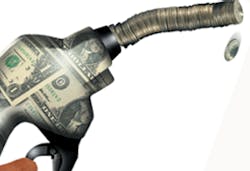Diesel prices are still set to escalate in 2006, according to energy experts. The Energy Information Administration (EIA) predicts that diesel prices in 2006 will average $2.54 compared with 2004’s average of $2.41-- a trend consistent with expectations of Oil Price Information Service (OPIS) analysts.
“The supply and demand balance is very delicate,” OPIS markets editor Denton Cinquegrana told FleetOwner. “You’ll see periods where demand is relatively strong and times when prices take a dip. For example, with distillate [a petroleum product that diesel is based on], once you have a mild week or two in weather, you’ll see a bit of dip in demand.”
Newly added refining capacity won’t come online until 2007, Cinquegrana added, as it takes time to apply for permits and expand existing refineries.
The significance of refining capacity on retail prices became very apparent when the immediate impact of Hurricanes Katrina and Rita led to new record high diesel prices of around $3. The refineries affected by Hurricanes Katrina and Rita account for 30% of U.S. refining capacity.
Also a complicating factor will be the EPA-mandated conversion of on-highway diesel fuels to ultra low sulfur diesel (ULSD), which is expected to add a 5-cent per gallon premium over existing diesel.
“In 2006 we’ll see a slight strengthening in diesel prices for two reasons: for one, there’s no sign of a decline in crude oil prices and secondly, the impending startup of ULSD,” EIA economist Tancred Lidderdale told FleetOwner.
Retail outlets are required to complete the conversion to ULSD by Oct. 15. By then, EIA predicts diesel prices will be in excess of $2.60 per gallon.
Cinquegrana noted that while quarterly forecasts for diesel prices provide a good baseline, the supply/demand balance is delicate enough that any amount of supply disruption could potentially cause a spike. “There’s so much that can happen between now and the end of 2006,” he said. “For example, no one could have seen a series of Category 5 hurricanes coming through the Gulf as they did last year.”
